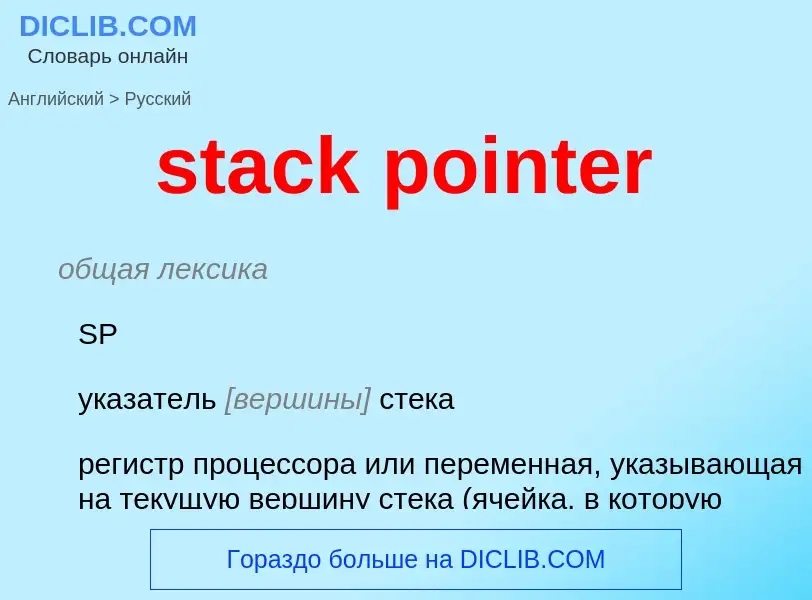Translation and analysis of words by ChatGPT artificial intelligence
On this page you can get a detailed analysis of a word or phrase, produced by the best artificial intelligence technology to date:
- how the word is used
- frequency of use
- it is used more often in oral or written speech
- word translation options
- usage examples (several phrases with translation)
- etymology
stack pointer - translation to English
общая лексика
SP
указатель [вершины] стека
регистр процессора или переменная, указывающая на текущую вершину стека (ячейка, в которую будет помещён следующий элемент). Все операции со стеком производятся с использованием этого указателя
Смотрите также
общая лексика
запись активации
общая лексика
стек вложенных подпрограмм, стек вызовов
Definition
Wikipedia
In computer science, a call stack is a stack data structure that stores information about the active subroutines of a computer program. This kind of stack is also known as an execution stack, program stack, control stack, run-time stack, or machine stack, and is often shortened to just "the stack". Although maintenance of the call stack is important for the proper functioning of most software, the details are normally hidden and automatic in high-level programming languages. Many computer instruction sets provide special instructions for manipulating stacks.
A call stack is used for several related purposes, but the main reason for having one is to keep track of the point to which each active subroutine should return control when it finishes executing. An active subroutine is one that has been called, but is yet to complete execution, after which control should be handed back to the point of call. Such activations of subroutines may be nested to any level (recursive as a special case), hence the stack structure. For example, if a subroutine DrawSquare calls a subroutine DrawLine from four different places, DrawLine must know where to return when its execution completes. To accomplish this, the address following the instruction that jumps to DrawLine, the return address, is pushed onto the top of the call stack with each call.

